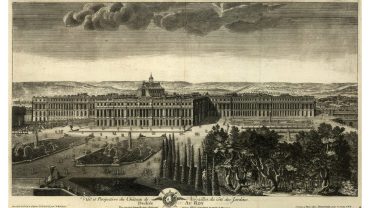The quest to verify the identity of Darius the Mede involves a near-impossible task of sifting through ancient texts, deciphering historical records, and interpreting archaeological findings. The Bible presents him as a ruler with wisdom and fairness, yet outside of the biblical account, references to the Mede king Darius are virtually non-existent. There’s no direct archaeological or textual evidence confirming his existence as a ruler in the manner described in the Book of Daniel, and this has fuelled speculation among historians, archaeologists, and biblical scholars.
Some propose that the true identity of Darius the Mede might represent a conflation of several historical figures or serve as a symbolic representation of Median influence within the Persian Empire. Others suggest he could be an otherwise undocumented ruler, whose reign was simply never recorded. Yet there are some who accept the historicity of Darius the Mede.
This journey over two and a half thousand years into the past will try to unravel the complex, interwoven threads of fact and fiction, and will attempt to answer the questions ‘when did Darius the Mede rule’, and perhaps more profoundly, ‘did Darius the Mede exist?’
The Conquest of Babylonia

Old engraved illustration of conquest of Babylon by Cyrus II (539 BC). (Credit: mikroman6 via Getty Images)
The conquest of Babylonia by Cyrus the Great, culminating in the overthrow of Belshazzar, the last leader of the Neo-Babylonian Empire, marked a significant turning point in ancient Near Eastern history.
In 539 BC, the Persian King Cyrus launched a lightning campaign against the Babylonian Empire, defeating the Babylonian army in battle and swiftly capturing its capital city, Babylon, without significant resistance. This event is famously documented in the biblical Book of Daniel and corroborated by various historical sources. It’s at this point that the story of Darius the Mede begins.
Following Babylon’s capture, the Bible introduces the Mede king Darius as being appointed ruler over the conquered territory at the age of sixty-two. This appointment, as presented in the scripture, signifies a transitional governance period before the full establishment of Persian rule under Cyrus and his successors, although historical and archaeological evidence for Darius the Mede’s existence and role remains a subject of scholarly debate.
The Book of Daniel

Title page from the book of Daniel in the bible. (Credit: Jon Frederick via Getty Images)
Darius the Mede appears in the Bible primarily within the Book of Daniel. His appearances are situated in a specific sequence of events that highlight his role and actions during his purported reign.
The First Mention of Darius the Mede
Following the fall of Babylon, Darius is introduced in Daniel, chapter 5, verse 31 (or in some versions chapter 6, verse 1). It states that Darius the Mede received the kingdom after Belshazzar, the last king of Babylon, is killed.
To further complicate matters, extrabiblical sources (those outside of the Bible) are torn on whether Belshazzar died during the attack, whether he was captured and executed a month before at the Battle of Opis, or exiled with his father.
Daniel in the Lion’s Den
The story in the Bible tells of Daniel, a loyal and pious servant at the court of the Mede king Darius. The king is tricked by Daniel’s jealous rivals into signing a decree banning prayer for thirty days to any god except Darius himself on pain of being thrown into a den of lions. However Daniel, who isn’t told of the decree, prays every day, and Darius, distressed at what he must do, sentences Daniel to death. However, after seeing Daniel’s survival, Darius issues another decree praising the God of Daniel and makes a proclamation of God’s sovereignty throughout his kingdom.
Seventy Weeks and Later Mentions
In chapter 9, verse 1 of the Book of Daniel, Darius the Mede is mentioned in relation to the timing of Daniel’s prayers and visions. This verse establishes the first year of Darius’s reign as the context for Daniel’s prayer of confession and his vision of the Seventy Weeks, a prophetic period for people to put an end to sin, to atone for wickedness, and to usher in an age of everlasting righteousness. The final mention is from chapter 11, although it’s more indirect. It references the support given to Darius, setting a context for angelic messages received by Daniel regarding future conflicts and the rise and fall of various kings.
Darius the Mede in History
While these biblical stories are well-known, the fact remains that Darius the Mede is unknown to history. Historians and scholars – biblical and secular – have tried to place him as a Babylonian king between the real historical figures of Belshazzar and Cyrus, but they have been unsuccessful for centuries, and, frustratingly, they remain so to this day.
The Identity of Darius the Mede

Portrait of Darius the Mede (6th century BC), King of Babylon. (Credit: DEA / ICAS94 / Contributor via Getty Images)
So did Darius the Mede exist? There are a number of candidates as to the possible identity of Darius the Mede, such as the third Persian emperor Darius the Great. Other possibilities include Astyages, the last king of the Median Empire; Cyaxares II, a Media military leader, or even Cyrus the Great himself.
Perhaps the most plausible candidate is Gobryas (sometimes Gubaru or Ugbaru). He was believed to be one of Cyrus the Great’s most trusted generals and played a key role in the conquest of Babylon. He could be linked to Darius the Mede due to his administrative authority over Babylon immediately following the death of Belshazzar, which might have been reinterpreted or remembered in the biblical account as kingship.
Darius the Mede: An Unresolved Mystery

Close up of an old bible. (Credit: Volodymyr Zakharov via Getty Images)
The figure of Darius the Mede stands as a captivating enigma within both biblical scholarship and historical inquiry. Despite the absence of definitive – indeed, any – historical corroboration, the investigation into the identity of Darius the Mede illuminates the complexities of ancient Near Eastern history, the construction of biblical narratives, and the intricately rich and vibrant tapestry of the empires that shaped the region.












